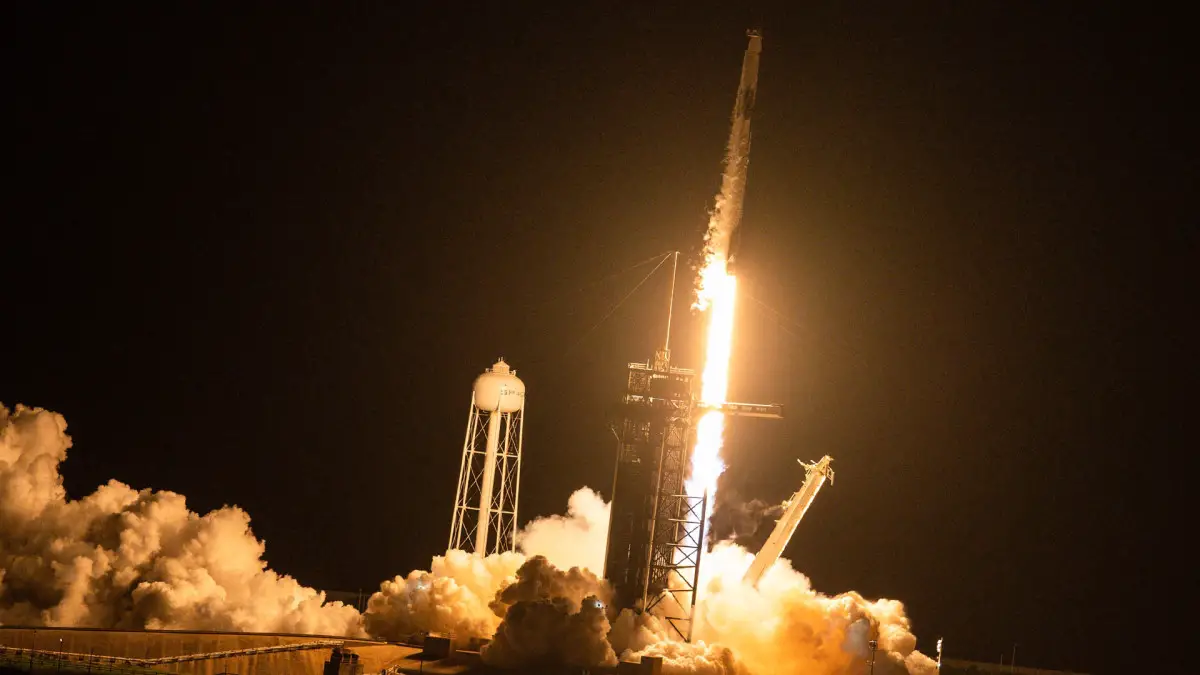NASA will provide $278.5 million to six satellite projects, including SpaceX’s Starlink network and Amazon’s Project Kuiper, to showcase next-generation space communication capabilities in Earth orbit. With the Communications Services Project, NASA’s constellation of tracking and data relay satellites, known as TDRS, will be replaced with a commercial network that utilizes several service providers.
With the International Space Station resupply and crew transportation using similar public-private partnerships, NASA is also preparing for future deliveries of scientific instruments and humans to the Moon’s surface. According to NASA’s Glenn Research Center project manager Eli Naffah: “By employing supported Space Act Agreements, we can push industry to show end-to-end capability leading to operational service,” he said today in a press release.
There will be many capabilities developed and operational concepts, performance validation and acquisition models required to plan the future procurement of commercial services for each class of NASA missions via the flight demonstrations. SpaceX’s satellites are built in the company’s Redmond, Wash., facility, which is only a few miles from Amazon’s Project Kuiper facility. Contractors include Inmarsat, SES, Telesat, and Viasat, all of which have U.S.-based operations, in addition to SpaceX and Project Kuiper.
By 2025, each company must demonstrate that its system is capable of delivering strong, dependable, and cost-effective services, including the ability for new high-rate and high-capacity two-way linkages.
By 2030, NASA plans to negotiate long-term contracts with numerous suppliers to obtain services for near-Earth operations while discontinuing its own satellite communications systems. The International Space Station will be deorbited and decommissioned around that time.
In this section, you’ll find information about the six contractors:
In Arlington, Va., Amazon subsidiary Kuiper Government Solutions LLC has been granted $67 million. For normal missions, contingency operations, and early operations phase communications, Kuiper’s suggested system illustrates an optical relay network for high- and low-rate satellite communications services. As a result, both Kuiper networks and spacecraft serving them would be located in low Earth orbit (LEO).
It’s been given $69.95 million to SpaceX of Hawthorne, Calif., for a planned strategy that is similar to Kuiper’s.
a U.S. subsidiary of London-based Inmarsat, has been granted $28.6 million for its work on the project. L-band relay network in geostationary Earth orbit, or GEO, is proposed by Inmarsat to provide low-rate satellite communications services to spacecraft and launch vehicles for normal missions, contingency operations, launch and ascent, and early operational phase communications.
US division of Luxembourg-based SES, SES Government Solutions, received $28.96 million. For normal missions, contingency operations, launch and ascent, and early operations phase communications, SES’ suggested solution shows radio-frequency satellite communications capabilities at high and low rates for spacecraft in LEO. Services in the C and Ka bands would be delivered by geostationary satellites, respectively.
In Arlington, a U.S. subsidiary of Telesat U.S. Services LLC, a Canadian company, $30.65 million was granted to Telesat. For normal missions, Telesat’s suggested strategy uses radio-frequency relay networks to provide high- and low-rate communications services to spacecraft in low-Earth orbit (LEO). GEO and LEO will be served by C- and Ka-band networks, respectively.
$53.3 million was given to ViaSat Inc. of Carlsbad, California. As part of its usual launch and mission activities, Viasat’s Ka-band network in GEO serves as a demonstration of a high- and low-rate communications service for spacecraft in low Earth orbit.
During the five-year period of development and demonstration, NASA anticipates each industry to equal or surpass agency contributions, totaling more than $1.5 billion in cost-share commitment.
As the director of Kuiper Government Solutions, Rusty Thomas is “proud” to have been chosen by NASA to participate in the Communications Services Project, he and his team have said in an email statement. By winning this prize, we can be certain that we’re on the right track with Project Kuiper,” Thomas added. NASA will benefit from our secure, dependable, and resilient communications network for future missions that need enhanced space-to-space communications, and we’re happy to do so.
Source: Geekwire

